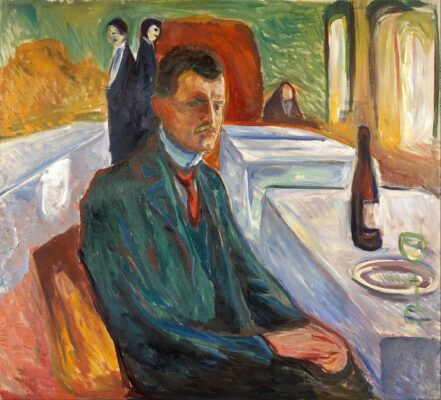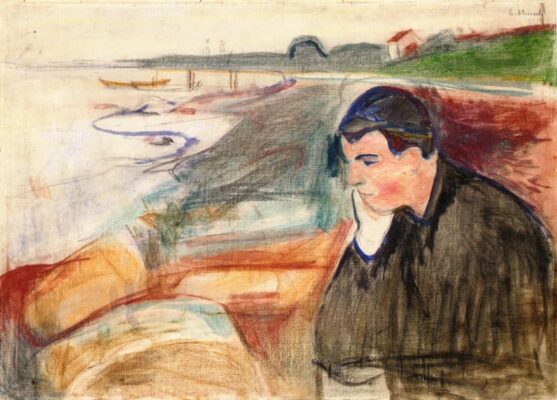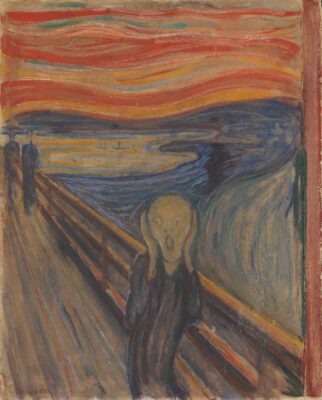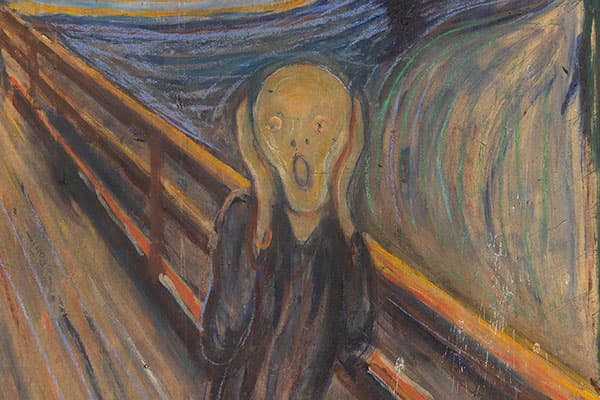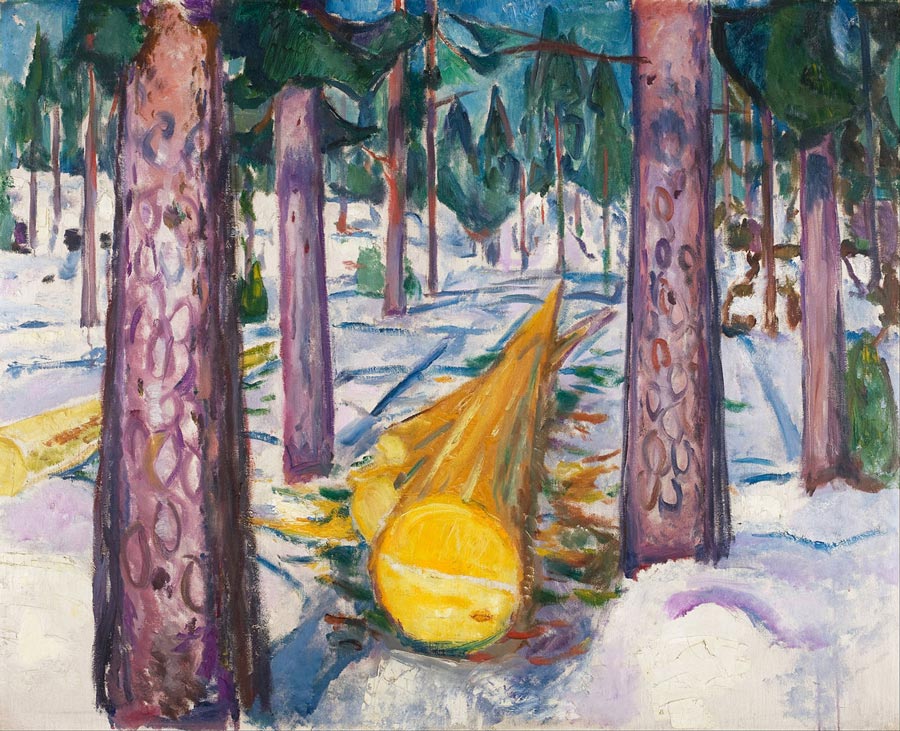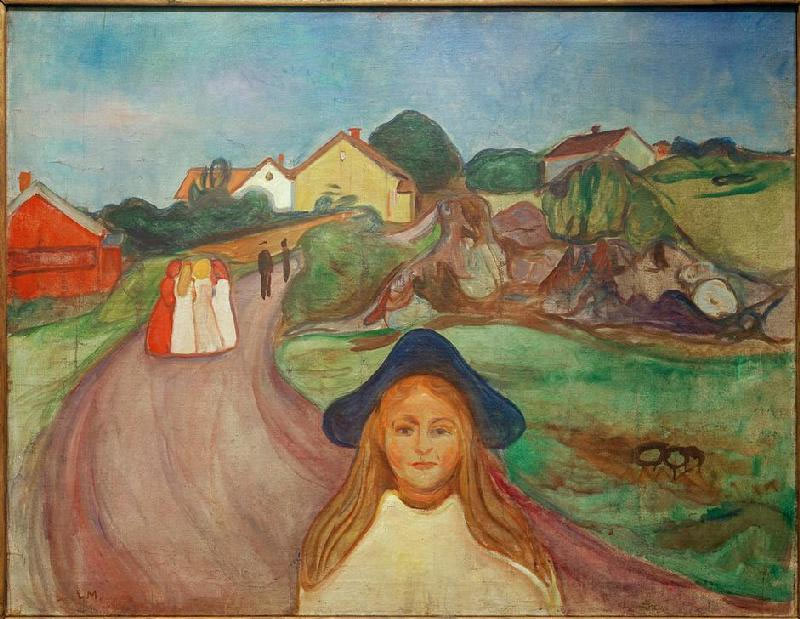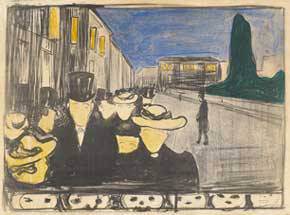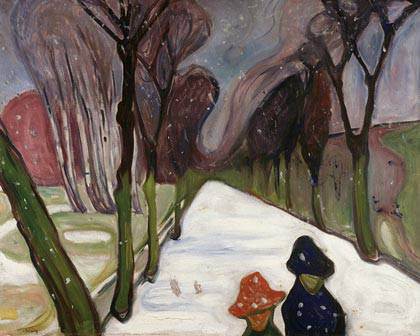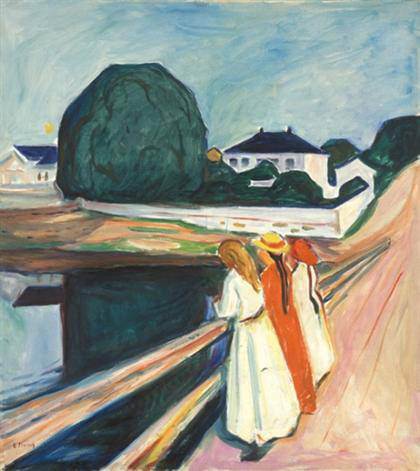Edvard Munch
“When seen as a whole, art derives from a person’s desire to communicate himself to another. I do not believe in an art which is not forced into existence by a human being’s desire to open his heart. All art, literature, and music must be born in your heart’s blood. Art is your heart’s blood.”
Edvard Munch
The expression “ahead of his time” applies to few artists with as much justice as it does to Edvard Munch (1863-1944) . Although for much of the public it seems that Munch painted only one work of interest (the extremely famous “The Scream“, one of the icons of art history), the whole of his work is fascinating and complex, and shows us an innovative artist, an expressionist before expressionism, essential to understand modern painting.
Edvard Munch: “Self-Portrait with a Bottle of Wine”, 1906. 110 × 120 cm. Munch Museum, Oslo.
It is striking that the two great painters currently considered -and rightfully so- as the forerunners of expressionism –Munch and Van Gogh– share the common characteristic of a long history of mental illness. An article by neuropsychologists M. Miranda, E. Miranda and E. Molina noted that “there are reasonable grounds to postulate that Munch possessed a borderline personality structure” (M. Miranda et al, “Edvard Munch: illness and genius”, 2012). But while Van Gogh reached a point where he could no longer bear the cries of his inner demons, Munch lived a long life, coming to accept his condition with a resigned attitude. “I inherited two of the worst enemies of mankind: tuberculosis and mental illness (…) From birth, the angels of fear, pain and death were at my side.”
Edvard Munch was born in a village in the interior of Norway in 1863, although his family moved to Oslo a few months later. His childhood was by no means easy, as his mother died when Munch was just three years old. The young Edvard was raised by his father, an extremely religious man. At the age of fifteen, Munch began his training as an engineer, but he quit just a year later to study painting at the Academy of Art and Design in Oslo.
The young Munch was attracted to impressionism, studying the works of Manet, but soon felt that this style did not allow him to express the emotion he wanted to include in his paintings. In 1889 he exhibited at the Exposition Universelle in Paris, coming into contact with the works of artists such as Van Gogh and Gauguin. In 1891 he painted “Melancholy“, his first important work, which seems to anticipate both Fauvism and Expressionism. After painting this work, he lived in Berlin for four years, completing his training as an artist.
Edvard Munch: “Melancholy”, 1891. 73x 101 cm. Munch Museum, Oslo. ·· Edvard Munch: “The Scream”, 1893. 91 x 73.5 cm. National Museum of Art, Architecture and Design, Oslo.
In Berlin, Munch created what is his most famous work, the aforementioned “The Scream“. Few works in the history of art have been so studied, commented, and even parodied as this painting, a prodigy of expressiveness. In 2006, theartwolf.com selected this painting (of which four versions are preserved, as well as an engraving) as one of the 50 masterpieces in the history of painting. Before the end of the century, he painted several of his best known works, such as “Anxiety” (clearly inspired by “The Scream“), “The Vampire”, of which several versions are preserved, and his famous “Madonna“.
Although “The Scream” is his most famous painting, his most ambitious work was “The Frieze of Life“, a pictorial cycle that includes works such as “The Storm” or “Moonlight“. The works that make up “The Frieze of Life”, as Frederick B. Deknatel pointed out, have, as a whole, no formal similarity, being completely different in scale or style, but “have in common the fact that their themes are related and that each is conveyed with the maximum visual impact possible, regardless of overal visual harmony” (Frederick B. Deknatel, “Edvard Munch”, 1950).
As noted above, his last years were marked by health problems, suffering from anxiety attacks aggravated by his alcohol consumption. In fact, although he did not die until 1944, at the age of 80, his artistic production after World War I is very limited, and in no case of the importance of his works made in the 1890s. However, his “early” works are in themselves enough to consider Munch as one of the pillars of modern art.
G. Fernández · theartwolf.com
Masterworks by Edvard Munch
More about Edvard Munch
Follow us on:

